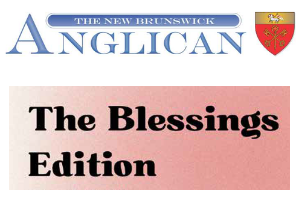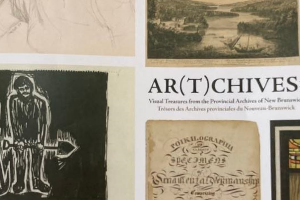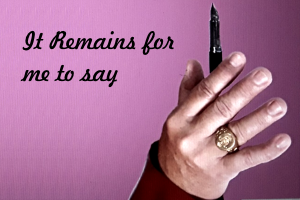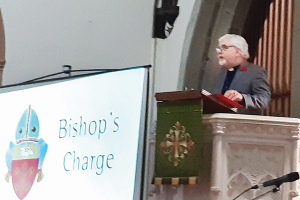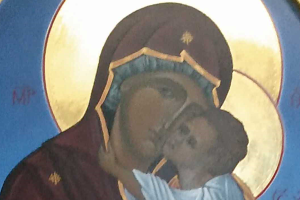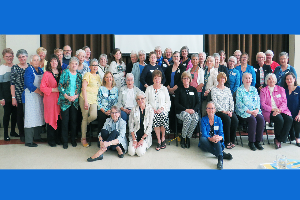
Click here to read the article by NB Anglican Editor Gisele McKnight.

Click here to read the article by NB Anglican Editor Gisele McKnight.
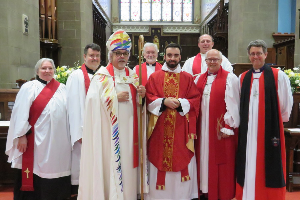
Click here to read the article by NB Anglican Editor Gisele McKnight, see photos and learn more about the ordination and Nicholas' unusual career path.
Nicholas and his fiancée Melissa will be married in the Cathedral in June. We wish them all the best!
This article about the former Dean of Fredericton (1999-2014), Rev. Keith Joyce, was recently published in the NB Anglican.
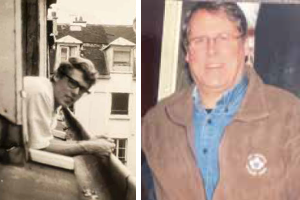
Keith was born shortly after his parents were forced to leave China in 1951, where they’d spent 25 years...
* * *
Read the full article, written by Gisele McKnight and published in the January 2023 edition of the NB Anglican.
The March and April editions of the New Brunswick Anglican newspaper contained many stories of times when members of the Diocese felt blessed. You will see some familiar Cathedral faces in these pages!
Click to read 'Blessings' stories from March 2023 and April 2023.
You can also view previous editions of the NB Anglican. The paper is distributed in print form with the Anglican Journal, our national newspaper. The New Brunswick Anglican is a member of the Anglican Editors Association which represents the common concerns of the Anglican Journal and diocesan papers throughout the Anglican Church of Canada.
The mission of the New Brunswick Anglican is to serve Jesus Christ and His Church by reflecting, in print, the spiritual life of the Diocese of Fredericton. It has a ministry of communication and teaching which provides a forum for cultural, theological and societal voices.

Mothering Sunday, not to be confused with Canadian Mother's Day, is celebrated in Anglican Churches on the Fourth Sunday in Lent. Learn more about Mothering Sunday, and get the recipe for Simnel Cake, a traditional Mothering Sunday treat!
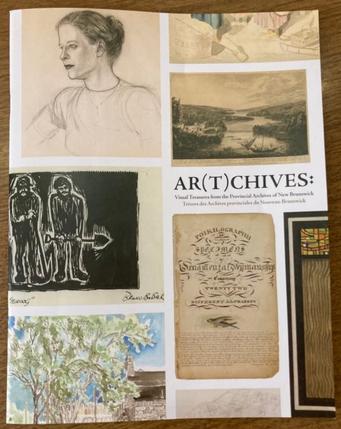
The exhibit, AR(T)CHIVES: Visual Treasures from the Provincial Archives of New Brunswick, is open to the public until May 28, 2023. Gallery admission is required.
"Archives are more than simply repositories of paper documents, ledgers, and census volumes; they often hold artistic treasures that tell an entirely different story than one containing only the written word. In partnership with the Provincial Archives of New Brunswick, we are pleased to present some of the most beautiful and fascinating visual records of New Brunswick (and Canada, for that matter) that you may ever see."
An illustrated booklet, available at the gallery, includes several works featuring Christ Church Cathedral, including architectural designs of the stonework, a pencil sketch showing the Cathedral and the Parish Church, and a watercolour sketch for the Reredos. Visit the exhibit to explore other treasures!
'It Remains for Me to Say', a book containing the memoirs of Archbishop Harold Lee Nutter is available for purchase at the Diocesan Synod Office for $28 (plus postage if required). Drop by the Synod Office upstairs in Memorial Hall, Tuesdays and Thursdays from 9:00 a.m. - 4:30 p.m. or email <office at anglican.nb.ca> for details. The book, edited by Archbishop Nutter’s son Andrew (Bruce) Nutter, tells a fascinating story of a long Anglican life.
A description of the book is below.
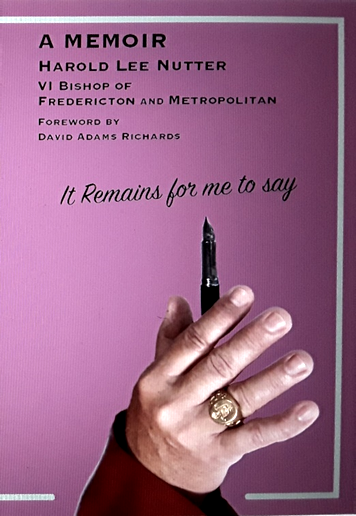
The Memoirs of Archbishop Harold Lee Nutter
edited by his son Andrew with a foreword by David Adams Richards
After he retired the Archbishop recorded his memoirs for the Provincial Archives of New Brunswick in 1992. They have had to be extensively culled but tell a fascinating story of a long Anglican life.
Harold Nutter was born in Welsford and named after his uncle whose name is included on the memorial at Vimy Ridge following his death in the Great War. His mother died of tuberculosis when he was nine. Unlike other boys of his age, interested in hunting and fishing, Harold began studying Greek at the age of twelve. His father, who ran the village grocery store, found his son’s unusual interest difficult to explain to fellow villagers.
In his first year at Mount Allison a devastating fire destroyed the men’s residence just before Christmas in 1941. Harold had been assigned to a top floor room with four other boys, but several days before the fire, the Dean of Residence moved him to another room on the same floor. Sadly, all the boys from that earlier room died understandably leaving Harold to wonder why he should be spared.
Later he was the recipient of five honorary degrees, a member of the Order of Canada, and a social reformer under New Brunswick premier Louis Robichaud. He was offered the Lieutenant Governorship of the province, and a seat in the Senate.
The Archbishop was sounding alarm bells in the later part of his episcopate over the wayward and woke direction of his beloved church. His writings now seem prescient.
Watch livestreams and recordings on our YouTube channel.
On Saturday, 05 November, the 138th Diocesan Synod was held at the Cathedral.
Read about the busy and productive day in an article written for the NB Anglican, by Gisele McKnight. Almost 300 attendees prayed together and worked together, considering Bishop David Edwards' charge which focused on the need for discernment of future ministry.
The video below, showing scenes from Synod, was created by Cathedral congregation member Helen Liang and features photos from a variety of sources.
Andrew Bruce Nutter has generously donated a commissioned icon for the Lady Chapel of the Cathedral. The icon is a memorial to the Sixth Bishop of Fredericton, Harold Nutter. Below, learn about the symbolism of the icon.
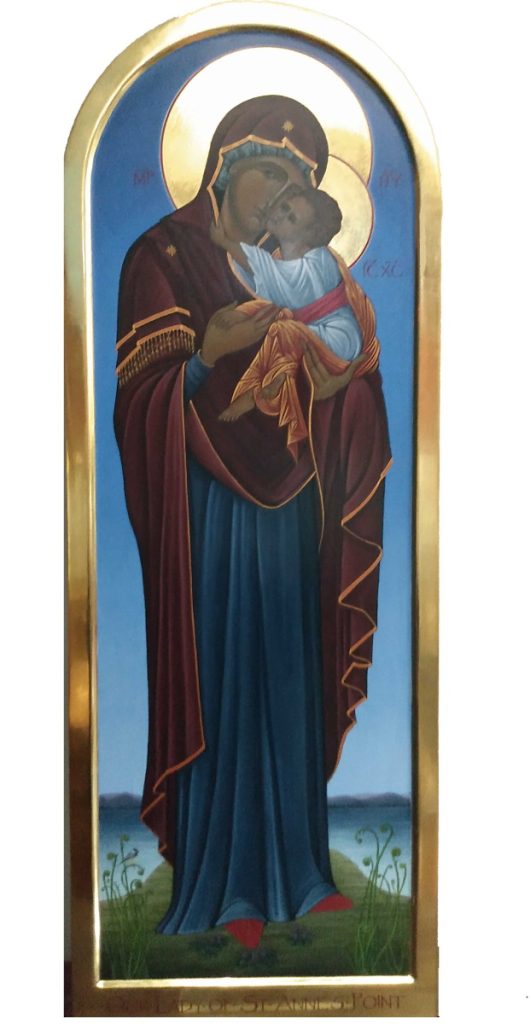
It commemorates the original designation of Fredericton as St. Anne's Point, thus connecting the establishment of the Cathedral along the river, with what went before, the French regime in New France. It affirms Bishop Medley's sensitivities of renaming the original Christ Church built on the north side of the present cathedral (moved to the upper Fredericton Flat) which he redesignated as St. Anne's Parish Church.
The icon commemorates both the Mother of God, and by the inclusion of St. Anne's Point, the grandmother of the Saviour, as well as the Incarnate Word Himself. It would have been inappropriate to name this icon as Our Lady of Anywhere had there been no previous connection such as that which pre-existed in the designation St. Anne's Point.
I asked the iconographer to paint the image in such a way that the Madonna could, by her skin tone, suggestively incarnate and honour the First Nations people living along the St. John River. A stylized St. Anne's Point, actually a short distance from the cathedral, is where Our Lady is standing, and the hills of the North Side of the river may be seen just beyond. At her feet are fiddleheads, three clumps of blue violets, and a chickadee.
The icon should be firmly attached to the wall. The gold frame is painted acrylic, and is washable, but the halos are gold leaf and should not be touched. A temporary descriptive acrylic plaque is included, but I am hoping for a more permanent one with indented letters to be made in a few months' time. I will be looking for an appropriate date for a blessing.
ABCN (Andrew Bruce Nutter)
October 2022
